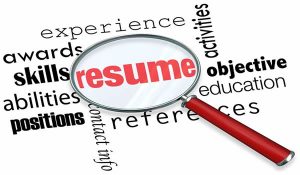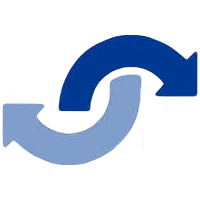
If you’re like most job seekers, the thought of sitting down to update your resume can seem pretty darned unpleasant. Anxiety provoking. Full-on dreadful.
You get the drift.
Part of the reason it feels like this is that you probably assume it’s going to take tons of blood, sweat, and tears to ensure that it’s not only current, but aligned directly to the types of roles you hope to land next.
This process is so overwhelming for many that, when it comes time to fluff up their credentials, they do an about face and instead head for the mall, the movies, or out for a drink.
But, what if I told you that you can make some substantial strides toward improving your resume in just five minutes? Sure, sure, it’s give-or-take, depending on how fast your fingers type and how focused you are.
But here are a few very quick five-minute updates that’ll get you more than started:
1. Get Rid of Clichés
Yes, I understand. You truly are a detail-oriented, out-of-the-box thinker who is responsible for a lot of stuff. But right there, you’ve got three horrendously overused clichés mucking up your resume—in one sentence. (And don’t even get going on your proven track record.)
Recruiters see these words and phrases so often—every single day—that they start to mean absolutely nothing to them. Seriously.
While keywords are certainly important (and, we’ll cover these in a sec), I assure you that no decision makers are entering “detail-oriented” into the search box in an effort to find you.
Your first step is looking at the doc and highlighting anything you know is a cliché, suspect is a cliché, or see that you’ve used too many times.
2. Pull Out the Crowning Moments for Each Job
This is among the most common issues I see—someone does a bang-up job of highlighting the duties and responsibilities she holds, but falls on her face when it comes to calling out the specific things she feels particularly proud of.
Certainly, recruiters need to understand what you did, when, and where. However, the thing that’s going to clinch it for you is evidence of your directly-relevant successes.
When working with clients, I typically break each job into two sections: first, I provide a brief overview of what the job seeker was hired, promoted, or recruited to do, and a quick summary of what the job entails.
Next, I create a subsection, called “Key Accomplishments” or “Select Highlights,” and list a few quick bullet points of key wins or stuff the person’s particularly proud of (especially “stuff” that’s related to the type of role you are gunning for).
It looks like this:

From there, you can fashion two or three easy-to-find statements that spell out very quickly how amazing you are. You can also bold key statements to ensure the eyeballs go right to the most important stuff.
And realize this: These don’t all have to be quantitative statements. Certainly, if you helped the company generate $3 million in sales or cut costs by 12%, the numbers can be very helpful.
However, don’t shy away from things that show relevant performance, yet maybe don’t have hard-and-fast data associated with them. Maybe you restored morale of a broken team, or positioned the company for future success by optimizing a process. These kinds of wins matter, too.
3. Swap Out the Objective With a Summary
The top of your resume is prime real estate. Don’t waste it by blathering out some contrived, says-absolutely-nothing objective. The reviewer knows your objective: to land a job. Thus, you truly don’t need to insert that you’re “Seeking a meaningful position with a culture-focused, growing organization that will benefit from my skills and experience.”
So for heaven’s sake, kill the objective and, construct a summary that introduces you—and your value proposition—right at the top. Keep in mind: It doesn’t have to be perfect, this can just be a rough draft (you can spend five minutes next week polishing it up).
Assuming you have a decent idea of what your target audience—the decision makers you’re trying to influence—is looking for, you should be able to write a series of three or four quick statements that introduce you in a manner that lines up with the deliverables of the jobs you’re seeking.
For instance, if you’re looking to be a project manager for a marketing agency, you’ll likely notice that many of the job descriptions call for an ability to manage timelines, budgets, and milestones. They want someone who can work cross-functionally with ease and rally people around a common goal.
IS YOUR RESUME READY TO SHOW TO A HIRING MANAGER?
Awesome! Now you should see who’s hiring so you can send it around.
4. Align Your Keywords to the Job
Now’s when you take it to the finish line with the most straightforward of the bunch—keyword alignment.
If you’re applying for jobs via online applications (as in, uploading via a company’s online portal), there’s a good chance that your resume won’t be viewed first by a human, but by an ATS.That said, you’re going to do yourself a tremendous favor by making sure that the words you’re using to describe your skills and capabilities mirror the skills and capabilities that are being called for in the job description.
So take a close look at the job description for the position you want to apply for. Highlight required and preferred skills that align with your capabilities. Now, make sure you’re using these in your resume—in your summary section, in a key skills section, and/or woven throughout your career chronology. It’s (quite literally) that simple.
And now go get that glass of wine. You’ve earned it.


